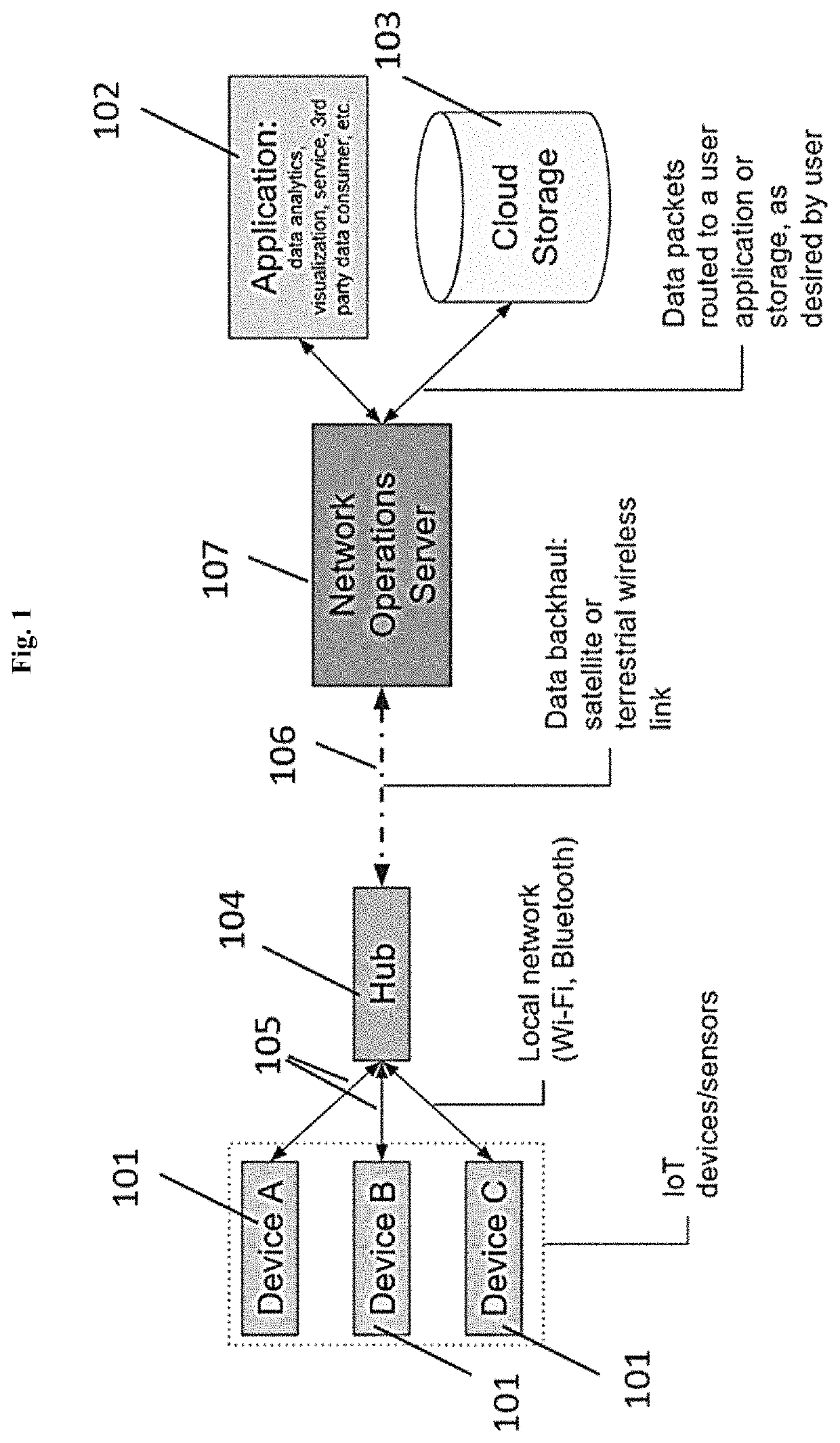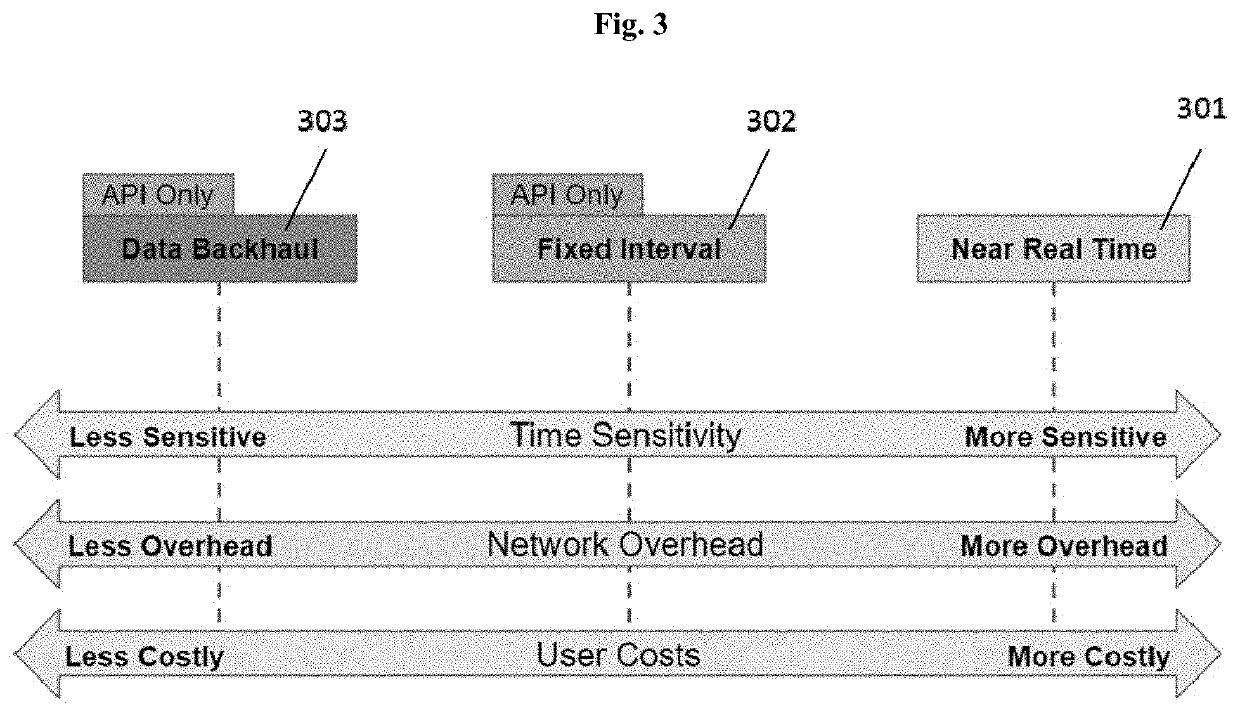Dynamic multiple access for distributed device communication networks with scheduled and unscheduled transmissions
a distributed device and communication network technology, applied in the direction of digital transmission, data switching network, electrical apparatus, etc., can solve the problems of speed, capacity, and responsiveness of communication between devices being limited by the available bandwidth of the communications channels employed, so as to prevent network saturation and minimize data collisions
- Summary
- Abstract
- Description
- Claims
- Application Information
AI Technical Summary
Benefits of technology
Problems solved by technology
Method used
Image
Examples
Embodiment Construction
[0021]Efficient use of bandwidth in device communication networks is of vital importance in maintaining quality of service for devices on the network in addition to increasing the network's capacity. In a packet-switched network of limited capacity, traffic needs to be managed to avoid saturating the available bandwidth. Traditional network protocols use collision detection and collision avoidance to manage access to the shared network bandwidth. However, with the ever-growing networks in which a large number (e.g., millions or more) of devices are simultaneously present on the network, a more efficient means of managing collision detection and avoidance is required as not to lose data or increase network congestion.
[0022]Many traditional random and responsiveness-dependent network connections (e.g., VoIP, purchasing, and alarms) require specific network performance characteristics to provide a desired user experience, which require larger overhead costs to ensure these specificatio...
PUM
 Login to View More
Login to View More Abstract
Description
Claims
Application Information
 Login to View More
Login to View More - R&D
- Intellectual Property
- Life Sciences
- Materials
- Tech Scout
- Unparalleled Data Quality
- Higher Quality Content
- 60% Fewer Hallucinations
Browse by: Latest US Patents, China's latest patents, Technical Efficacy Thesaurus, Application Domain, Technology Topic, Popular Technical Reports.
© 2025 PatSnap. All rights reserved.Legal|Privacy policy|Modern Slavery Act Transparency Statement|Sitemap|About US| Contact US: help@patsnap.com



